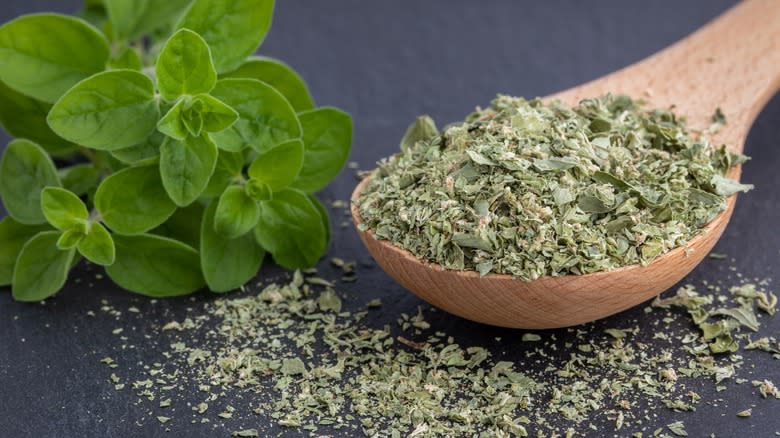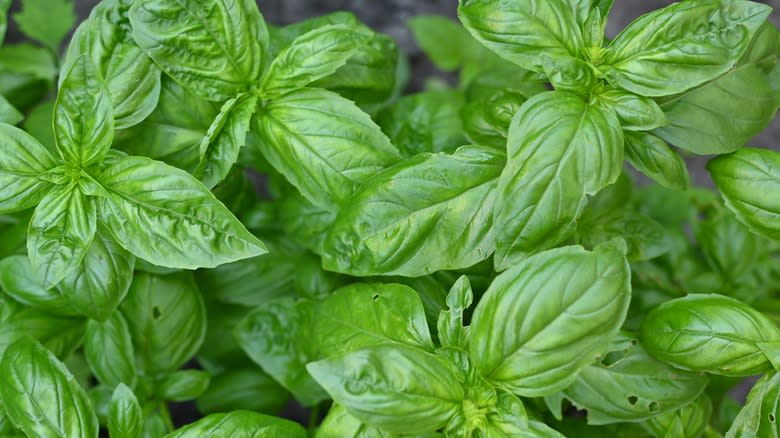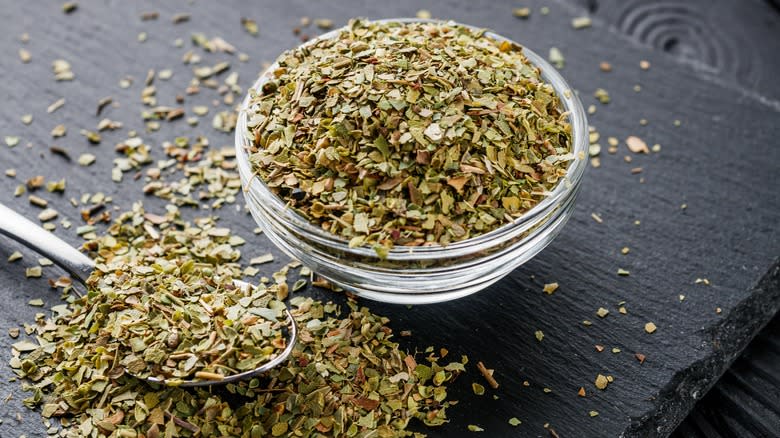Don't Have Oregano? Here's What You Can Use Instead

We may receive a commission on purchases made from links.
Oregano is a must-have herb; its rich and earthy flavor can be found in numerous Italian, Greek, Mexican, and Turkish dishes. If you find yourself without any oregano, however, don't worry. Plenty of other herbs -- dried and fresh -- can be substituted in a pinch.
A member of the mint (otherwise known as Lamiaceae) family, oregano's herbaceous fragrance has made it a popular choice to sprinkle on pizzas as well as in soups and casseroles and a plethora of sauces and salads. It exists in a variety of forms: Mediterranean oregano, used in many traditional Greek dishes, is the most common branch of the oregano family tree, which also includes the unique Mexican oregano, Italian oregano, and Cretan (aka Turkish) oregano.
Despite its distinctive taste, dried oregano, in particular, can be swapped out for other herbs fairly easily. Unlike fresh oregano, dried oregano possesses a slightly more subtle and less overwhelming aroma and retains more of its herbaceous pungency than other herbs and spices after being dried. Oregano shares plenty in common with its herbal relatives in the mint family. In case of an oregano emergency, try some of these alternatives.
Read more: French Cooking Tricks You Need In Your Life
Fresh Basil Is A Great Substitute For Fresh Oregano

Basil and oregano belong to the mint plant family alongside other common garden herbs like lavender, rosemary, and thyme. Like oregano, basil can be dried or used as fresh seasoning. However, basil possesses a less pungent flavor than oregano. Both herbs are commonly used in Italian dishes.
Some nutritionists regard basil, oregano, and rosemary as the ideal herbal trio due to their similar flavors and considerable health benefits. All three are packed full of antioxidants and anti-inflammatory qualities. For some chefs, however, rosemary can be harder to substitute for oregano, thanks to its piney undertones. Rosemary is more interchangeable with sage, while the flavor of fresh oregano more closely resembles basil or marjoram.
Fresh thyme is sometimes used instead, producing a milder, less bitter taste than its cousins in the mint family. Oregano and thyme share many similarities, though they hail from different branches of the family tree (oregano from the Origanum genus and thyme from the Thymus vulgaris genus). Like basil and oregano, thyme complements a range of tomato-based dishes as well as stews, soups, and roasts.
Replace Dried Oregano With Dried Parsley, Sage, Marjoram, Or Tarragon

Substituting dried oregano can be less challenging thanks to its slightly more subtle taste. While basil, rosemary, and thyme remain viable options, other herbs such as tarragon and parsley evoke similarly earthy flavors when dried. The two herbs don't quite align with oregano when it comes to flavor, however. Oregano has a more pronounced taste than parsley, while tarragon is well-known for its licorice-like undertones. Fresh herbs taste stronger, so if you want your parsley or tarragon to be less potent, using dried alternatives might be preferable.
There are better alternatives to oregano, however. Of all herbs, marjoram most closely resembles oregano in taste. Common oregano is sometimes called wild marjoram, but true marjoram is a closely related but different plant in the mint family. Both plants have green, oval-shaped leaves when fresh; when dried, they become more interchangeable in text and texture.
True marjoram -- also known as sweet or knotted marjoram -- is the sweeter herb; oregano contains more carvacrol, the compound responsible for its savory flavor. Marjoram makes a particularly ideal oregano substitute for poultry seasonings and is traditionally used to preserve meats.
Read the original article on Daily Meal.

